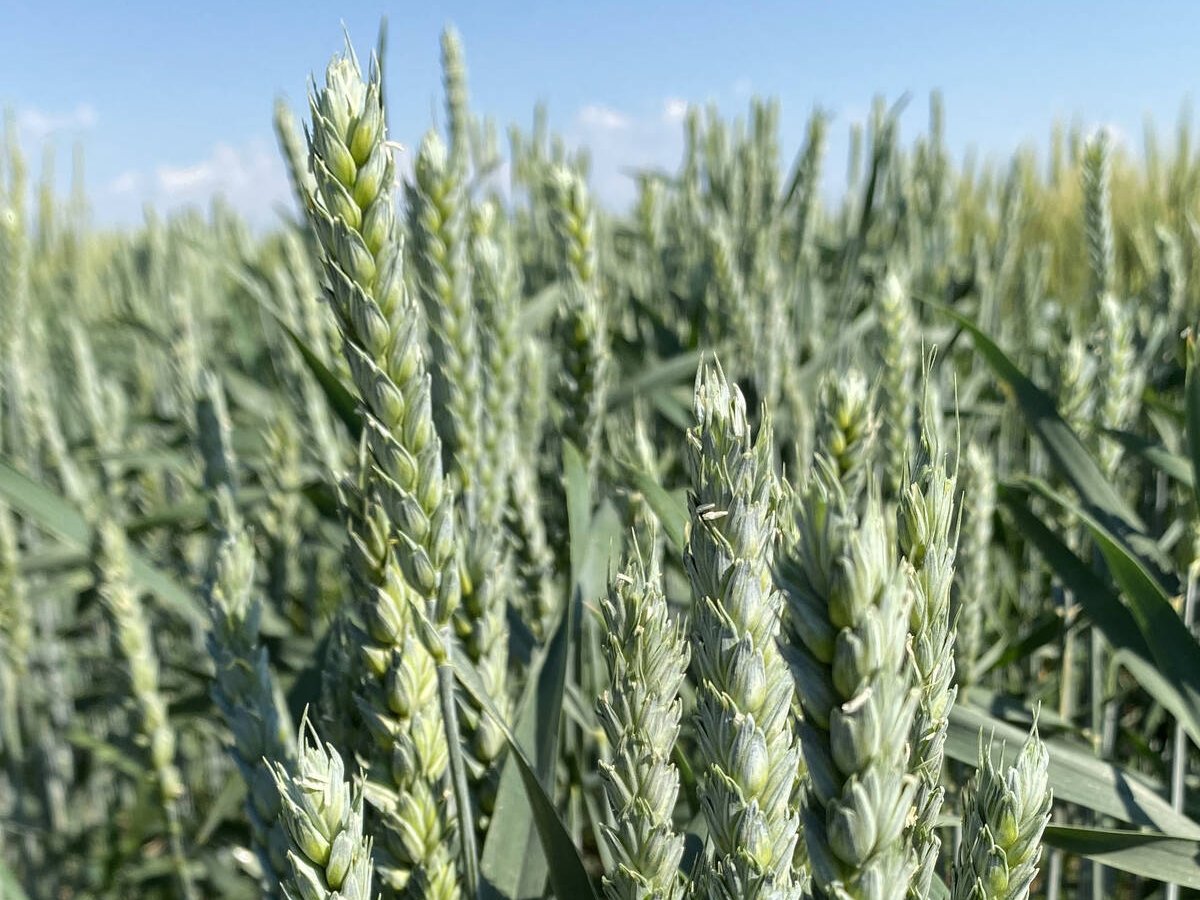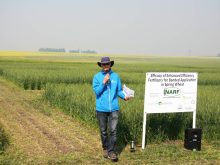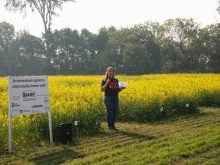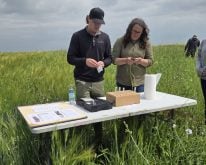SASKATOON — Scientists at the University of Maryland have discovered a gene that has the potential to greatly increase wheat yields.
The gene was found in a spontaneously occurring mutant of common bread wheat that grows three ovaries per flower.
Researchers prepared a detailed gene map of the mutant variety and compared it to regular wheat.
Read Also
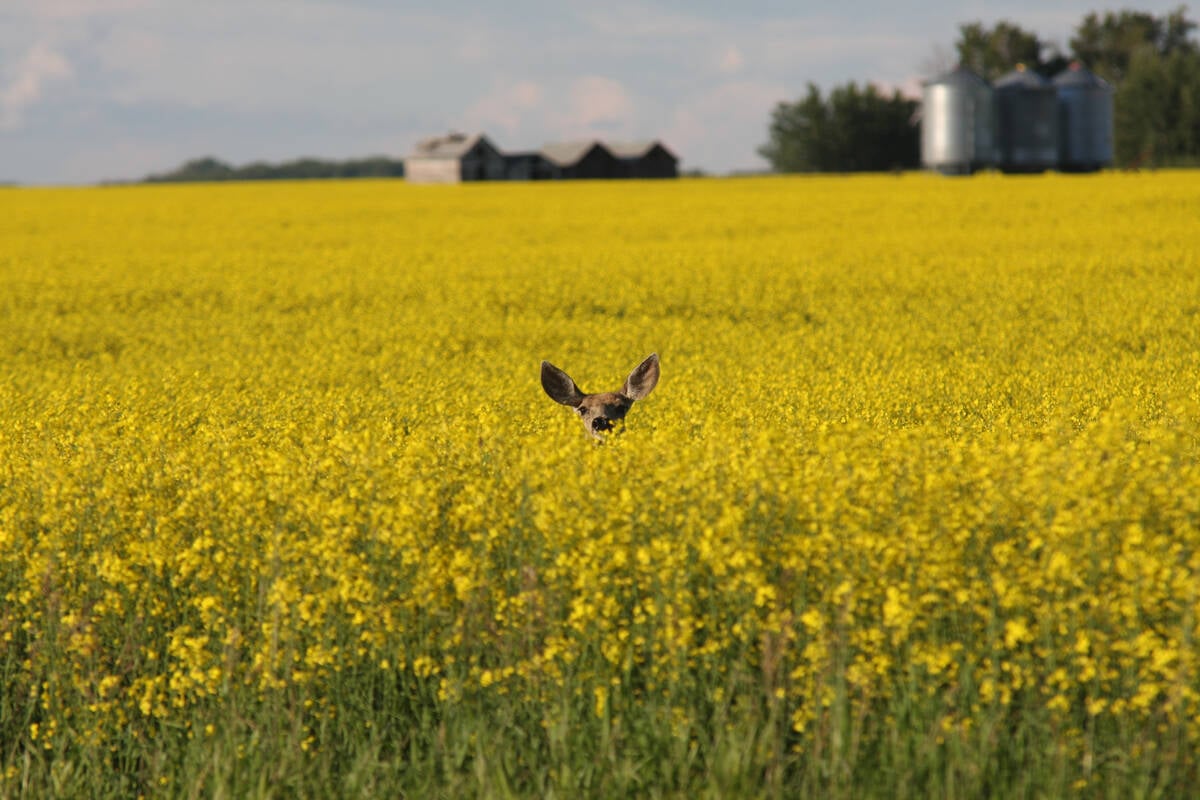
Drones now used to assess wildlife crop damage in Saskatchewan
Wildlife damage in Saskatchewan crops is now assessed by drones and artificial intelligence.
Why it Matters: Wheat yield increases have been lagging behind corn and soybeans.
They discovered that a normally dormant gene called WUSCHEL-D1 (WUS-D1) was switched on in the multi-ovary wheat.
“When WUS-D1 is active early in flower development, it enlarges the flower-building tissues, enabling them to produce extra female parts like pistils or ovaries,” the university stated in a press release.
Each ovary can develop into a grain of wheat, greatly increasing the potential yield for the crop because normal wheat plants only produce one ovary and one grain per floret.
“Pinpointing the genetic basis of this trait offers a path for breeders to incorporate it into new wheat varieties, potentially increasing the number of grains per spike and overall yield,” said Vijay Tiwari, associate professor of plant sciences at the university and co-author of the study.
The study was published in the Proceedings of the National Academy of Sciences journal.
Darcy Pawlik, executive director of the Wheat Growers Association, said the research discovery sounds exciting.
“He’s doing a lot of cool work there, and I’m sure there’s a lot of interest, no doubt,” he said.
“Good on him, and I’m sure it will lead to different applications and discoveries, whether it’s in wheat or a different cereal, who knows, but that’s great.”
However, over the years he has heard of a lot of similar yield-boosting discoveries that never came to fruition.
There is a long way to go between discovery and commercialization.
“Just because you have three kernels doesn’t mean you’re going to get extra yield,” said Pawlik.
Tiwari acknowledged that it is too simplistic to say the gene has the potential to triple wheat yields.
In large-scale trials under field conditions, 70 to 80 percent of the florets contained three grains of wheat, which is still impressive.
But there’s a catch.
“The catch is that the floral structure is still the same, so it does not have enough space to make three fully developed grains as we see with normal wheat,” said Tiwari.
The next step in the project is to find a way to expand the grain size. That might mean reducing the number of grains per floret to two, but those two would be heavier grains.
The Maryland researchers just planted the first winter wheat field trial of the trait in October.
They want to see what happens when they boost nitrogen fertilizer rates. The hope is that a 30 or 50 per cent increase results in heavier, plumper grain kernels.
Tiwari hopes to have the gene expressed in elite lines over the next 18 months. He will make that germplasm available to other breeders who want to use it to make crosses in their programs.
“By employing a gene editing toolkit, we can now focus on further improving this trait for enhancing wheat yield,” he said.
He also noted that the discovery provides a potentially exciting new route for developing cost-effective hybrid wheat.
Normal wheat usually has tiny florets that do not open much, making it difficult for hybrid wheat to pollinate.
The three ovaries in the mutant line forces the wheat florets to open wide, making the plant far more amenable to receiving pollen.
Seed cost is also a big barrier for hybrid wheat. If you can get three grains at the same cost, then that cost goes down significantly.
Tiwari said there are still some obstacles to overcome to make the plants suitable for hybrid wheat production.
His work is generating excitement around the world, including from major wheat breeding companies that are showing interest in doing some collaborative research.
Pawlik said that is where the rubber will hit the road with this new trait.
“That’s really where we see if it can maybe make a big difference in the marketplace,” he said.


